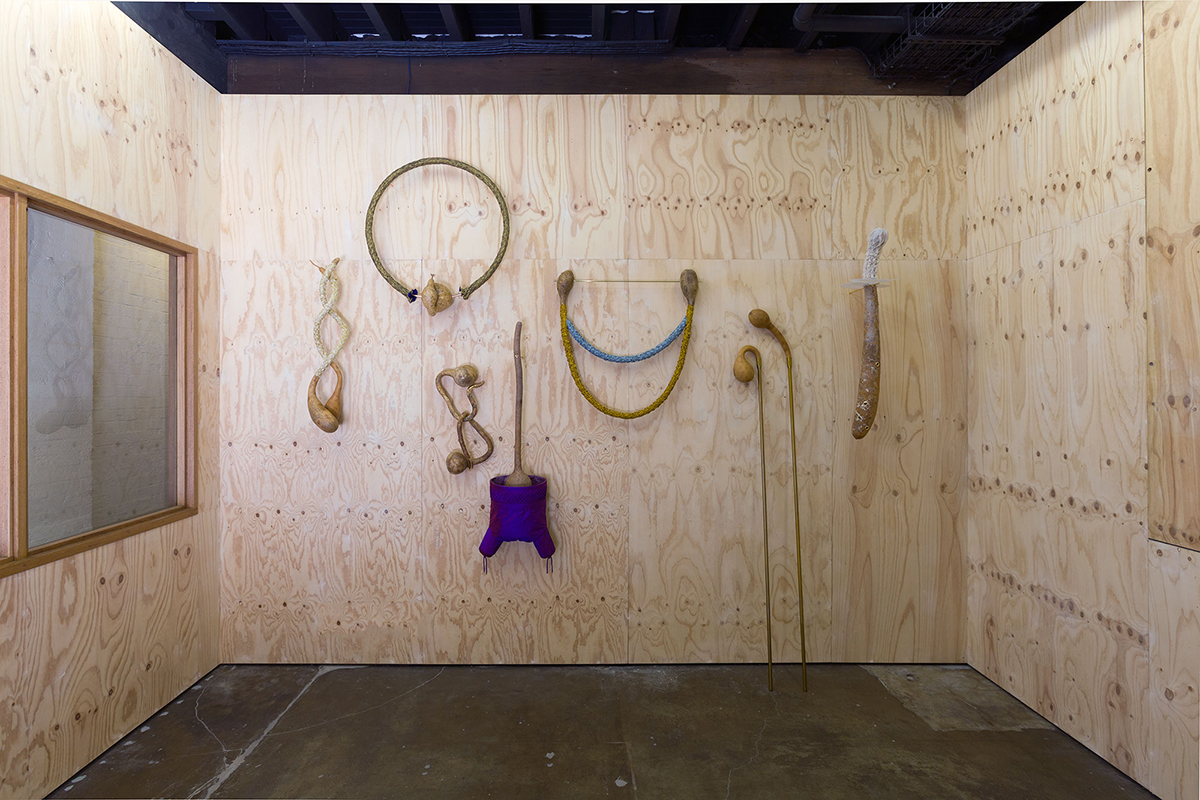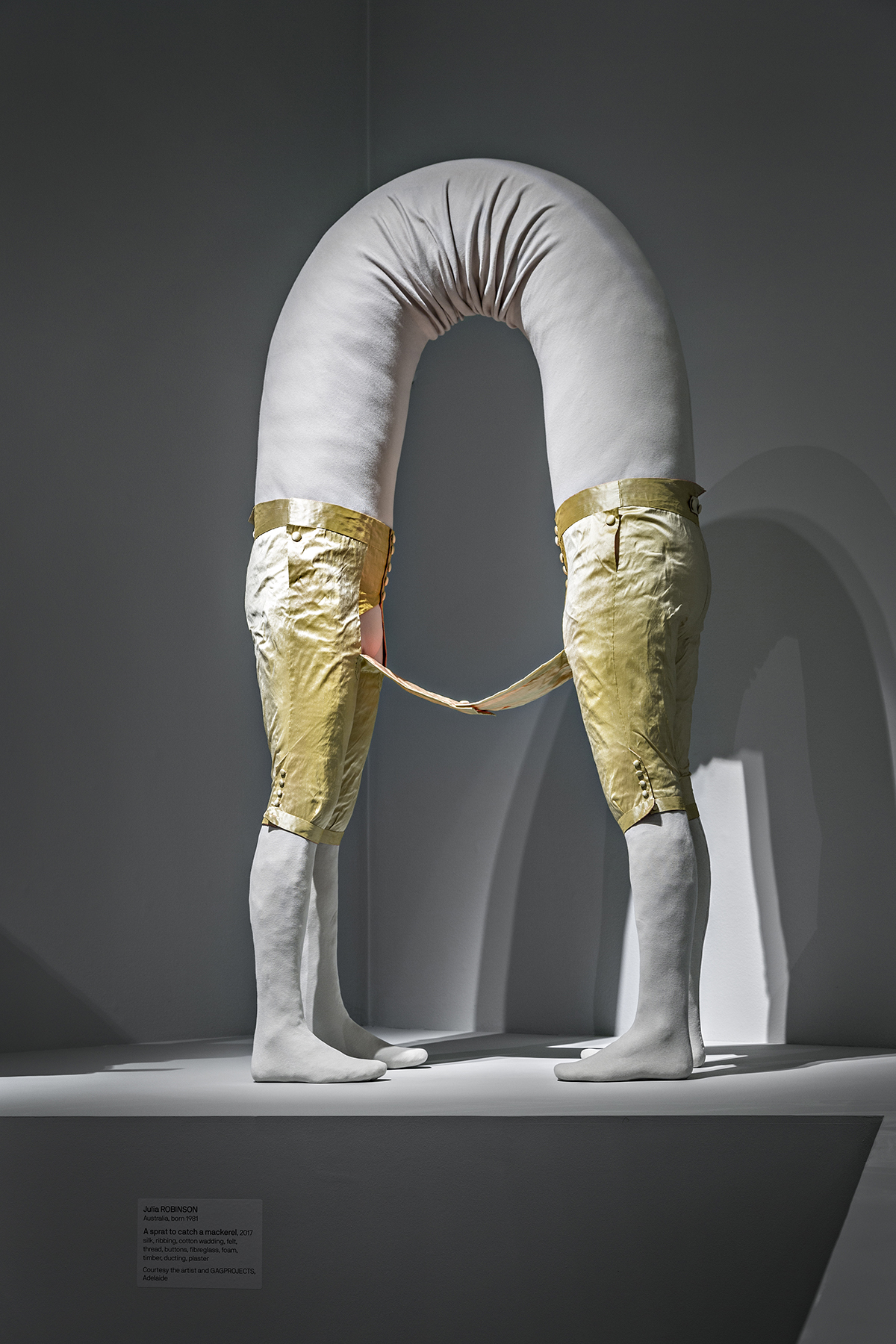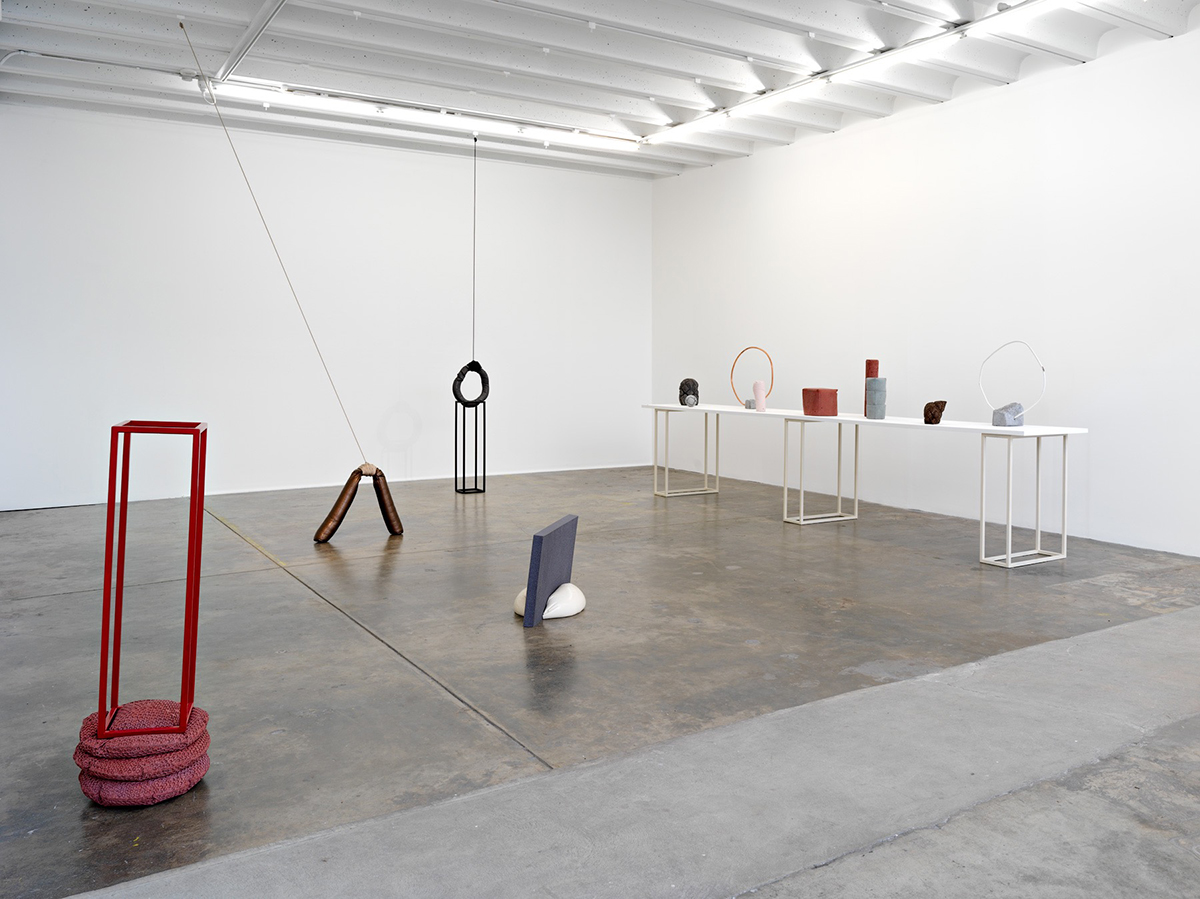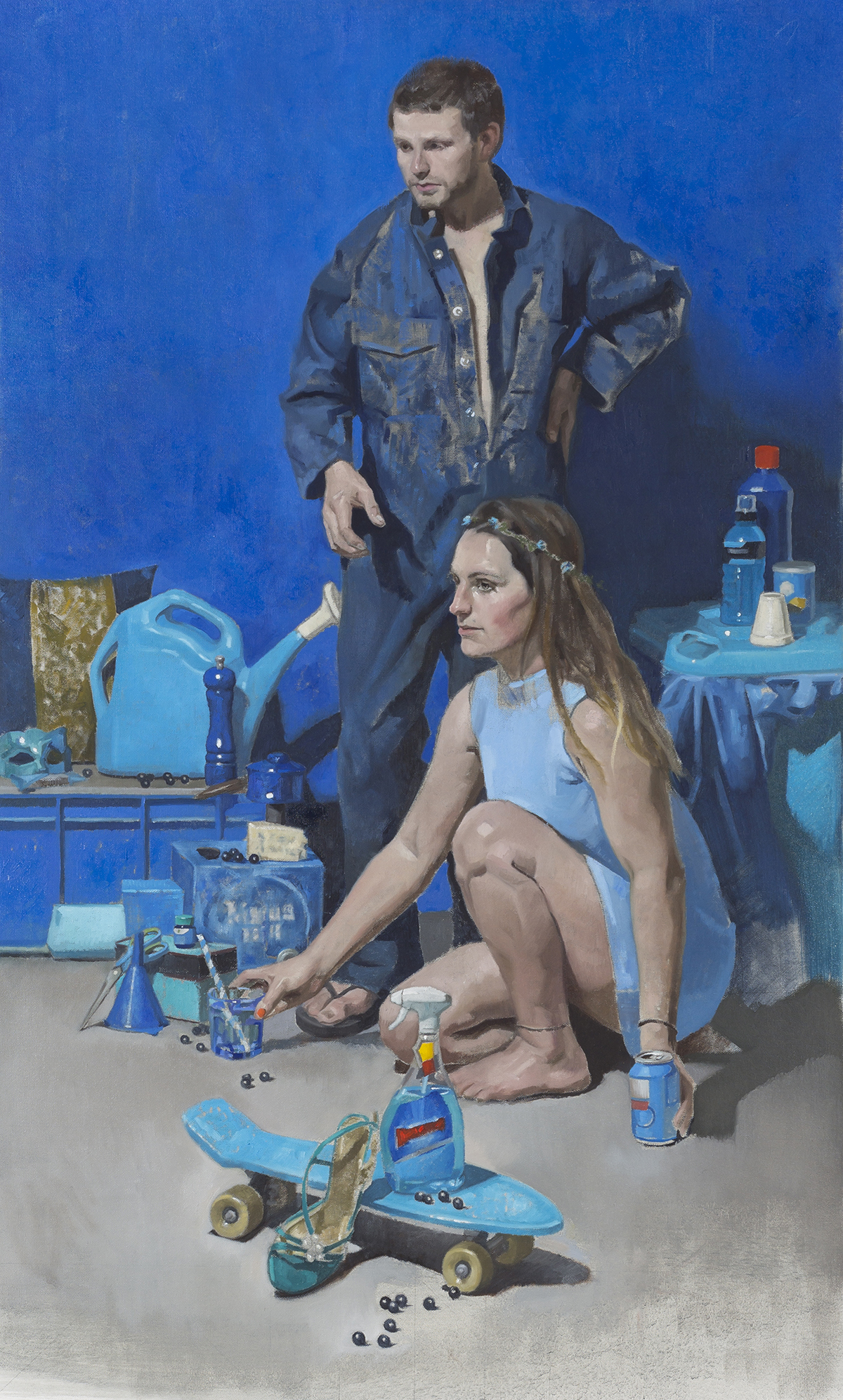
Adelaide Central School of Art: Solid framework, rigorous practice
Nestled in the leafy suburb of Adelaide’s Glenside is a not-for-profit private school with a principal aim: to produce visual artists. Founded in 1982 by artist Rod Taylor and led by Ingrid Kellenbach, Adelaide Central School of Art (ACSA) has established itself as an institution of distinction in both teaching practices and student success. I spoke with three generations of graduates about their experience at the school and its enduring impression on their practices: Julia Robinson (Class of 2002), Anna Horne (2008) and Andrew Clarke (2015).
Approaches to teaching and learning that consistently arise at ACSA align with “growth mindset,” a concept developed by US psychologist Carol Dweck (Mindset: The New Psychology of Success, 2007), who suggests the way we approach challenges has an impact on how much we learn from them. Robinson, Clarke and Horne all point to the following as pivotal to their education and their careers since graduating: an intimate and collaborative environment that promotes creativity; the encouragement of experimentation, with the recognition that failure is part of learning; and, to build aptitude, the freedom and flexibility of choice when it comes to method and medium.

A sprat to catch a mackerel, 2017, Julia Robinson, installation view, Versus Rodin: bodies across space and time, Art Gallery of South Australia, Adelaide, photo Saul Steed
Julia Robinson
I meet Julia Robinson in her studio at Switchboard Studios in Norwood, where she works alongside other ACSA alumni and staff including Deborah Prior, Luke Thurgate, Zoe Freney and Jess Mara. She is stitching one of the Elizabethan era garments that cloak the sculptural gourds of her recent work. Robinson is best known for meticulously constructed works of art that reflect a history of ritual and religion across culture, time and place. Her work stems from an enduring interest in human responses to sex, death and the afterlife and she draws inspiration from a multitude of sources including myth and legend, poetry, the Bible and European folklore.
Since graduating from Adelaide Central in 2002, Robinson has been positioned at the forefront of Adelaide’s contemporary art scene, while gaining national acclaim. Already this year she has featured in a major exhibition, Versus Rodin: Bodies across space and time at the Art Gallery of South Australia, and a solo exhibition, Long Ballads, at Artspace’s Ideas Platform, Sydney. She is currently working towards the upcoming Tamworth Textile Triennial. Robinson’s conceptually and materially ambitious approach to art making is evident in her output. She attributes this to ACSA, proposing that her education afforded her “a strong framework for a rigorous practice.”
The school forms a significant part of Robinson’s life and practice, as both a former student and current lecturer. For her, “[ACSA] offers a strong sense of reality in regards to the life of an artist.” The diverse yet tight-knit community, the encouragement of critical thinking and verbalisation of ideas and the dynamic multidisciplinary approach by the teaching staff are, she says, defining elements of the school. The significance of being active in the wider arts community becomes evident to the students through the school’s dedication to employing practising artists as lecturers and supervisors. Seeing her teachers at work on site between classes and visiting their exhibitions at major institutions helped shape Robinson’s understanding of the ways to sustain a life in the field and aided in her motivation towards her own making under their direction.
A resistance to labelling was also important for Robinson, who was encouraged to relax a self-imposed definition of herself as a “painter” and embrace a broader approach to making. “I was creating these elaborate sewn sculptures but still identifying myself as a painting major on my enrolment form,” she says. “When Anna Platten, my supervisor, suggested I didn’t need to label myself that way, it was a freeing moment.”
Robinson says that ACSA has a strong reputation for building technical skill as the cornerstone of an artist’s practice. However, the school is also keenly focused on conceptual thinking, operating under the premise of the artist “thinking through making.” Since 2004, Robinson has helped build upon this dynamic firsthand through her involvement in the development of ACSA‘s Contemporary Studio Practice curriculum.

A Balancing Act, 2017, Anna Horne, installation view GAGPROJECTS, photo Grant Hancock
Anna Horne
Fellow graduate Anna Horne is an artist exploring materiality and process through sculpture. Her practice plays with balance and the force of gravity and focuses on the interplay between the familiar and the strange. Horne’s forms exist in a precarious state, possessing both an intense physicality and a latent energy: they are at once soft and hard, light and heavy.
In the artist’s studio, Horne gives herself over to the process of making. She works on multiple sculptures at once, allowing the forms to shape her direction. Industrial techniques such as fabricators are relied upon sparingly as Horne prefers to use her own hands in a manner that, she tells me, allows for a “certain amount of individuality and emotion to find its way into the work.” This process of repetition with subtle variation began during her time at the ACSA under the supervision of artist Roy Ananda, who promoted experimentation, autonomy in problem-solving and the creation of a visual language that was truly her own. “[Ananda] helped me tease out my personal process”, says Horne. “Nearly 10 years later, I still tap into ways of making that feel familiar from my time at ACSA”.
Much like Robinson, the shared studio has been critical for Horne. Along with fellow ACSA affiliates Amy Joy Watson, Mary-Jean Richardson and Roy Ananda, she shares a space at Fontanelle studios, now located across Port Adelaide and Bowden sites. Here, the artists continue the community experience of art school, sharing and talking through ideas and approaches. This environment naturally lends itself to collaboration, as evidenced in Horne and Watson’s 2017 exhibition in Adelaide’s Art Pod gallery, The Collaborators, curated by ACSA supervisor Andrew Purvis.
Horne has exhibited frequently since graduating. This year she has shown a body of work titled A Balancing Act at Greenaway Art Gallery and participated in the group exhibition Soft Spot, Hard Feelings at the artist-run Holy Rollers Studios, both in Adelaide. In 2016 Horne undertook an Asialink residency in South Korea, culminating in the exhibition Between the Lines at Gachang Art Space. The artist says that she owes her diligent work ethic to ACSA. The training taught her to be determined, stay focused and to make, exhibit and apply for as much as possible.

The Azure Alchemist, Andrew Clarke, 2017, image courtesy the artist
Andrew Clarke
2017 has been a similarly prolific year for 2015 alumnus Andrew Clarke. He has exhibited at BMG Art and Hill Smith Gallery in Adelaide and continues to operate Floating Goose Studios Inc, a studio and gallery space he founded in 2014 with fellow graduates Chris Carapetis and Leah Craig. Clarke creates large-scale figurative paintings that re-investigate the historical phenomenon of the grand narrative. Making use of a hybrid gestural language derived from a multiplicity of sources including the commedia dell’arte, baroque and 19th century French history painting, Clarke presents circumstances in which the characters performing the history become cognisant of their involvement in a fiction, subsequently acknowledging the audience and at times suffering existential crises.
Hearing of the school’s focus on technical skills, Clarke enrolled at ACSA with a keen interest in drawing and painting. He did not anticipate the intellectual rigour with which he would learn to approach his medium. “Drawing became a mechanical function, a universal system that anyone can learn to use. Once equipped with this skillset, we were taught how to operate that function on an intellectual level,” says Clarke. “We were encouraged to look at drawing as proposition, as poetry and as a form of language.” This approach was evidenced in the recent exhibition, The Drawing Exchange, curated by ACSA drawing lecturer Luke Thurgate and held across Adelaide Central School and the National Art School, Sydney. The exchange saw student and lecturer alike experiment with drawing next to each other in the space and across the spaces via the internet.
The focus on propositional works and the ability to verbalise ideas with his peers has been key to Clarke’s life as an artist beyond art school. “The critique process set me up for self-criticism and idea generation. I began to call my own ideas into question and learnt not to run with the first idea but to delve in deeper and to find complexity.” Positioning himself within a history of art was another revelation. “We were learning art history and practicing art history at the same time — learning divine proportion while measuring boxes with a stick; learning about Modernism while experimenting with Expressionist painting; learning about conceptual art while building a thoroughly conceptual practice”.
The growth mindset is about fostering a way of thinking that allows for constant development. For Robinson, Horne and Clarke, this came in the form of being thrown into a space where lecturers and peers alike were experimenting, problem-solving and proposing ideas. As Julia Robinson says, “you have to be a bit of a romantic to be an artist” and at Adelaide Central School of Art, students are with others of the same mind.
–
Read about Adelaide Central School of Art degrees, courses, scholarships, facilities and graduate resources.
Joanna Kitto is Curatorial Researcher at the University of South Australia’s Samstag Museum of Art. She is co-founder and co-editor of fine print magazine.
Top image credit: Long Ballads, 2017, Julia Robinson, installation view, Ideas Platform, Artspace, Sydney, photo: Jessica Maurer.






